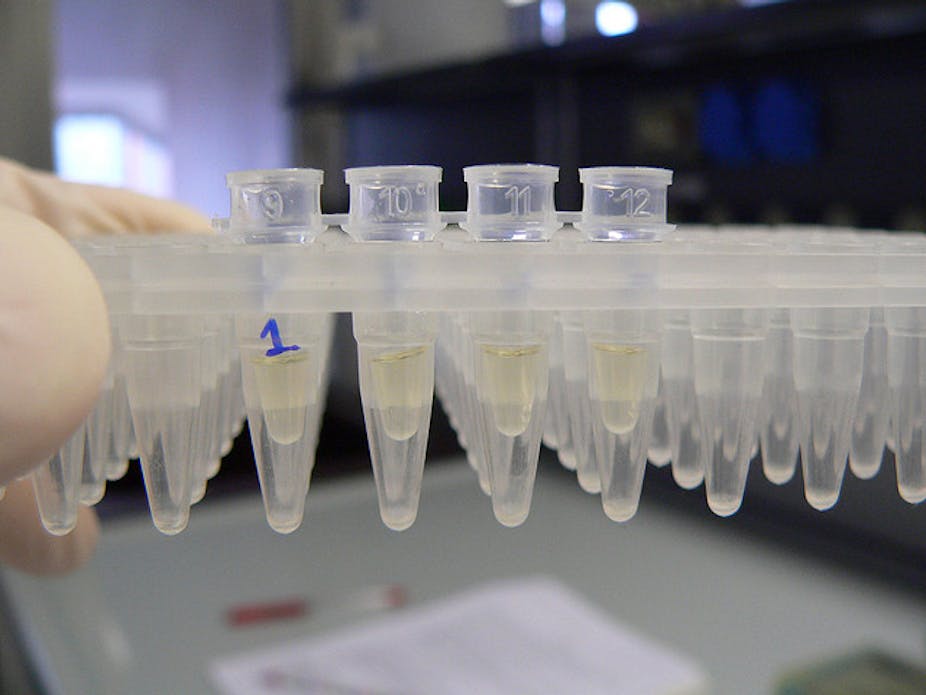When you think of evolution, you no doubt imagine a process that takes millions of years to produce any notable results. In other words, evolution doesn’t happen overnight.
Or does it?
While the most significant evolutionary changes do take millions of years to happen – the creation of new species or the appearance of new body parts, for example – evolution can also be observed on a much shorter timescale, and often within a person’s lifespan.
Think for a moment about domestication, a process through which human-induced selection has resulted in significant modifications to plants and animals.
Or think of the way that pathogens are becoming resistant to antibiotics; pests are becoming resistant to insecticides; or weeds are becoming resistant to herbicides.
These are examples of evolution in response to selective forces, and they are happening before our eyes.
Evolution in real-time can also be observed under the scrutiny of the scientific method, and researchers call it “experimental evolution”.
How it works
The basics are quite simple:
1) Choose a species of plant or animal to study
2) Split the species into several groups
3) Apply an external pressure to one or more groups
4) See how the affected groups “evolve” over a period of time
For example, you could split a population of weed into several groups, apply a weed-killer to half of those groups and compare the treated and untreated individuals at the end of the experiment.
Only weeds that have shown resistance to the weed-killer will be able to leave descendants (because you can’t leave descendants if you are dead). These descendants will inherit the weed-killer resistance and will pass it on to subsequent generations.
The result? Resistance to the weed-killer is “selected” in the treated groups, just as it would be in nature. In this sense, we’ve created our own miniature version of evolution without having to wait millions of years for a result.
But the really interesting questions follow: what is the genetic basis for the evolution of resistance adaptations?
Are there trade-offs between resistance and other fitness-related traits? Are there limits to the evolution of resistance? Can evolution be reversed if we use ancestral conditions?
Experimental evolution enables us to answer such questions.
Microbes
Professor Richard Lenski from Michigan State University and his collaborators are among the most prominent researchers currently showing evolution in action.
Their trick is to study organisms amenable to a life in the lab and with short generation times. And if it’s short generation times you are after, where better to look than microbes.
Lenski’s started his experiment way back in 1988 with 12 populations of the commonly occurring Escherichia coli (E.coli) bacterium. That study is still ongoing – more than 22 years and 52,000 generations of bacteria later – and continues to show evolutionary changes in response to selection and randomness.
Among the jewels produced by Lenski’s long-term study is the emergence of E.coli families that exploit their environment in ways that reduce competition for resources.
In particular, Lenski and his team found that one of the 12 E. coli families evolved the ability to use a compound known as “citrate” as a food source. By evolving this ability, this family was able to breed more successfully and survive longer than the other families.
Another exceptional finding of Lenski’s lab, recently published in Science, indicates that the ability of organisms to evolve (evolvability) can itself evolve.
This remarkable discovery was achieved by freezing bacteria at some points early in the selection experiment and reviving them years later to assay the outcome of competition between groups of bacteria whose descendants either eventually prevailed or were extinct at a later time.
In the words of Richard Lenski “Imagine Neanderthals brought back to live among us. How would they fare at chess or football?”
Put this in the context of the microbial world and the achievements by Lenski’s group and you will get a glimpse of the power of experimental evolution in helping us to understand nature.
Dung beetles, mites and mice
It isn’t just microbes that are amenable to experimental evolution.
At the Centre for Evolutionary Biology at the University of Western Australia we’ve recently used a diverse array of model systems, including dung beetles, mites and mice.
All these studies have provided exciting results in the space of just a few generations.
For example, by manipulating the mating system of a particular species of dung beetle, we were able to learn a lot about mating choices and reproductive competition in that species.
We did this by splitting the beetles into groups and comparing the groups against each another.
Beetles from some populations were forced to mate with just one partner while beetles from other populations were allowed to choose from and mate with multiple partners (as they do in nature).
After just 21 generations (four years) of laboratory selection, the males who had been allowed to take multiple partners exhibited a different “genital morphology”, higher fertilisation success and larger testis size than their monogamous counterparts.
Sure, we would have to wait millions of years to see more dramatic evolutionary changes, but in 48 months we’ve been able to demonstrate the means by which selective pressures work.
And that, in evolutionary terms, is no time at all.

